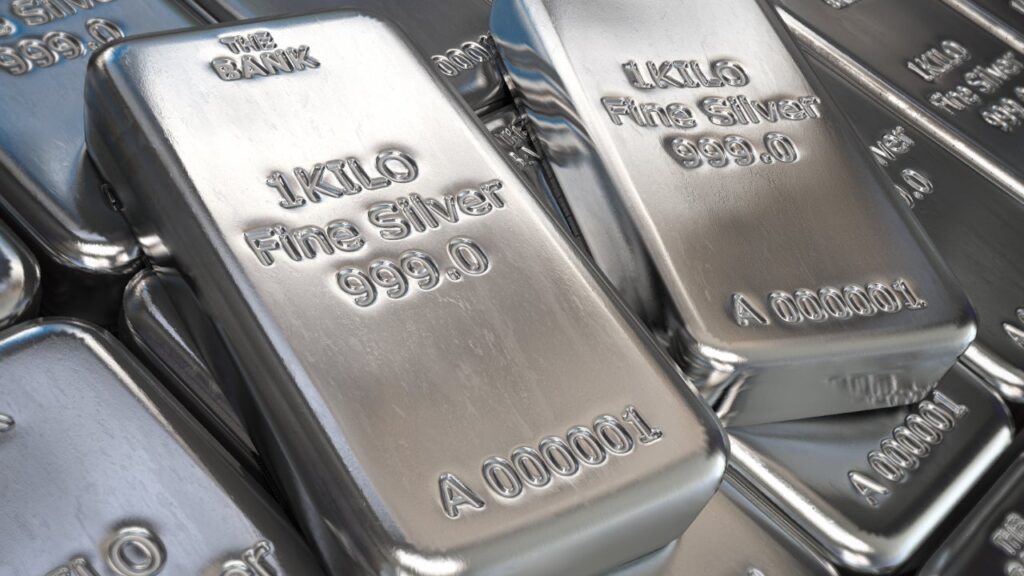Have you thought about diversifying your retirement portfolio with silver? Does the idea of investing in precious metals for your future excite you? Before you make a move, knowing the right steps is crucial. Here are five key factors to consider when buying silver for your Individual Retirement Account (IRA), ensuring your investment is safe and potentially lucrative.
Choosing the Right Type of Silver
Silver must meet certain purity and authenticity criteria to be eligible for an IRA. You must choose IRA approved silver, which usually means the silver is at least 99.9% pure. It’s important to purchase these metals through accredited and reputable dealers who provide proper certification of their products’ purity and legitimacy. These measures guarantee that your investment adheres to IRS standards and retains eligibility for retirement savings.
Understanding the Costs Involved
Beyond the initial purchase price, other costs such as dealer commissions, shipping fees, and insurance must be considered when buying silver. There may also be ongoing costs like storage fees, which can accumulate over time, potentially affecting your investment returns. Thoroughly researching and comparing these costs among different dealers can help you minimize expenses and maximize the return on your investment. To manage your budget effectively, it’s crucial to be fully aware of all the fees involved.
The Importance of Storage and Security
Secure and compliant storage is necessary when investing in physical silver for your IRA. The IRS mandates that these investments be held in a secure, IRS-approved depository. Some investors prefer segregated storage to ensure their silver is not commingled with other investors’ assets, providing an extra layer of security and easier access when it’s time to sell. Choosing the right storage option is essential for both compliance and peace of mind in the safety of your investment.
Long-term Investment Strategy
Silver should be part of a diversified retirement strategy that might include stocks, bonds, and other assets. Diversifying helps mitigate risk and can lead to more stable and consistent growth over time. Based on your overall risk tolerance and investment horizon, consider how silver fits with your other investments and the level of exposure you’re comfortable with. Balancing your portfolio with various assets can provide financial stability as market conditions change.
Choosing a Reputable Dealer
The importance of working with a reputable and reliable dealer cannot be overstated. A trustworthy dealer will ensure that you receive high-quality, authentic silver and offer fair prices and solid customer support. They can guide you through the buying process, provide detailed market insights, and assist in making decisions that align with your investment goals. Always check the dealer’s credentials and customer feedback before making a purchase.
Potential for Growth
Silver offers a safe haven in times of economic uncertainty and the potential for growth. Its applications in industries such as electronics and medicine can drive demand and increase its value over time. These factors can make silver an attractive growth asset within your retirement strategy. The dual benefits of security and growth potential make silver appealing for those looking to enhance their investment portfolio’s performance.
Tax Implications
Understanding the tax implications of investing in silver within an IRA is crucial. Typically, gains from silver investments within an IRA are tax-deferred, meaning you won’t pay taxes until you withdraw in retirement. Familiarizing yourself with the relevant tax regulations can help you plan your investments more effectively and avoid surprises. Consulting with a tax advisor is advisable to ensure that all your decisions are tax-efficient.
Advantage Gold says, “Much like with gold coins, the Tax Payer Relief Act of 1997 allows investors to open self-directed IRAs and invest their money in IRS-approved silver coins and bars. Even if an investor decides to focus exclusively on silver as part of their IRA, most people still refer to this kind of investment as a gold IRA.”
Considering these essential factors, you can make more informed decisions about incorporating silver into your retirement plan. Each of these considerations plays a crucial role in ensuring your investment is secure and profitable, potentially adding significant value to your retirement assets.
